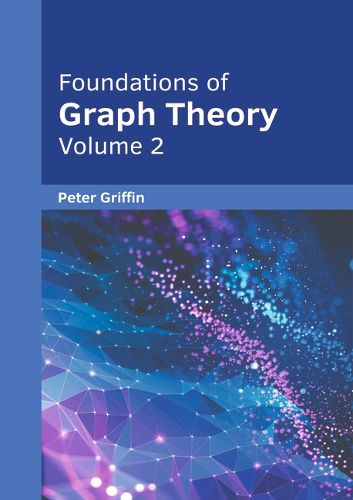Readings Newsletter
Become a Readings Member to make your shopping experience even easier.
Sign in or sign up for free!
You’re not far away from qualifying for FREE standard shipping within Australia
You’ve qualified for FREE standard shipping within Australia
The cart is loading…






Graph Theory is a branch of mathematics that investigates graphs, which are abstract structures composed of vertices (nodes) interconnected by edges (links). Vertices typically represent discrete entities, such as individuals or objects, while edges denote pairwise relationships or interactions between them. Central to Graph Theory are fundamental concepts such as connectivity, paths, cycles and vertex degrees. Connectivity assesses the robustness of connections within a graph, paths are sequential routes connecting vertices via edges, cycles are closed paths returning to the starting vertex and vertex degrees denote the number of edges linked to each vertex. Graph Theory finds extensive applications across diverse fields including computer science (network analysis, algorithm design), biology (modelling biochemical pathways), and sociology (studying social networks). Most of the topics introduced in this book cover new techniques and the applications of Graph Theory. This book is a compilation of chapters that discuss the most vital concepts in the field of discrete mathematics. It aims to serve as a resource guide for students and experts alike and contribute to the growth of the discipline.
$9.00 standard shipping within Australia
FREE standard shipping within Australia for orders over $100.00
Express & International shipping calculated at checkout
Stock availability can be subject to change without notice. We recommend calling the shop or contacting our online team to check availability of low stock items. Please see our Shopping Online page for more details.
Graph Theory is a branch of mathematics that investigates graphs, which are abstract structures composed of vertices (nodes) interconnected by edges (links). Vertices typically represent discrete entities, such as individuals or objects, while edges denote pairwise relationships or interactions between them. Central to Graph Theory are fundamental concepts such as connectivity, paths, cycles and vertex degrees. Connectivity assesses the robustness of connections within a graph, paths are sequential routes connecting vertices via edges, cycles are closed paths returning to the starting vertex and vertex degrees denote the number of edges linked to each vertex. Graph Theory finds extensive applications across diverse fields including computer science (network analysis, algorithm design), biology (modelling biochemical pathways), and sociology (studying social networks). Most of the topics introduced in this book cover new techniques and the applications of Graph Theory. This book is a compilation of chapters that discuss the most vital concepts in the field of discrete mathematics. It aims to serve as a resource guide for students and experts alike and contribute to the growth of the discipline.